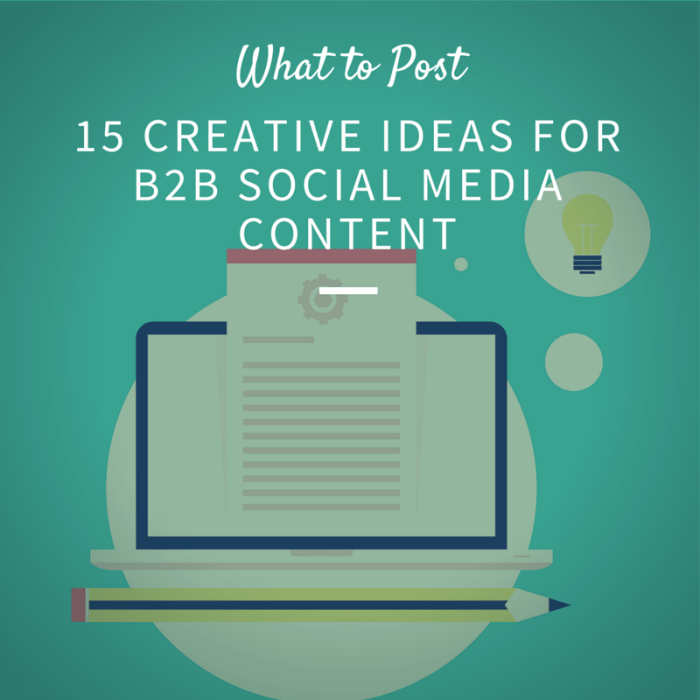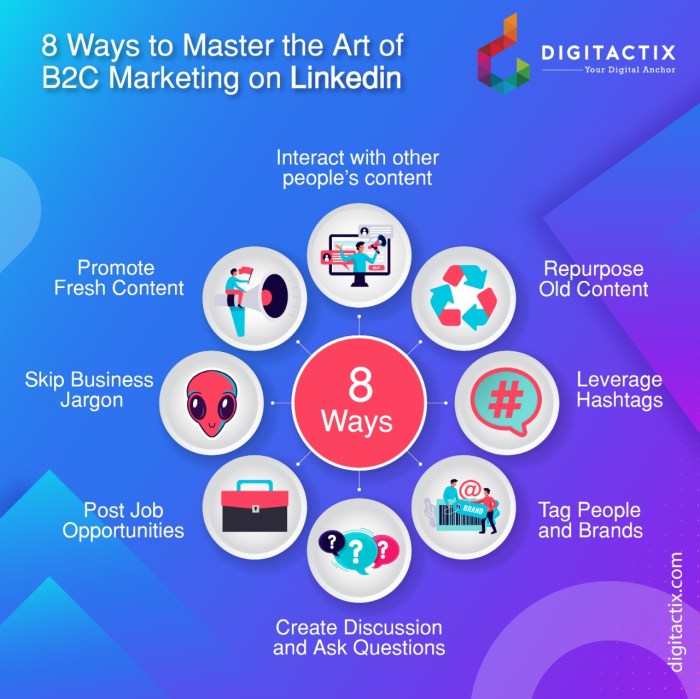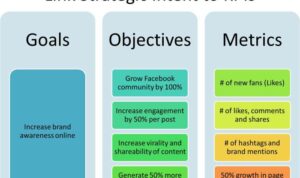Creating Social Media Content for B2C kicks off the game with a slam dunk, showcasing the key plays to score big with your audience. From defining the importance to exploring content types, this playbook has it all.
Get ready to dive into the world of B2C social media content creation and discover the winning moves that will elevate your brand’s online presence.
Importance of Social Media Content for B2C
Social media content plays a crucial role for Business to Consumer (B2C) companies in today’s digital landscape. It allows businesses to directly engage with their target audience, build brand awareness, and drive customer loyalty.
Examples of Successful B2C Social Media Content Strategies
- Interactive Content: Polls, quizzes, and contests can increase engagement and create a two-way conversation with consumers.
- Influencer Partnerships: Collaborating with influencers who resonate with your target audience can help reach a wider customer base.
- Visual Storytelling: Sharing visually appealing content such as videos, infographics, and images can capture attention and convey brand messages effectively.
How Social Media Content Impacts Brand Awareness and Customer Engagement for B2C Businesses
Social media content has the power to elevate brand awareness and foster customer engagement for B2C businesses in several ways:
- Increased Reach: By creating shareable content, businesses can expand their reach to a larger audience and attract new customers.
- Brand Personality: Consistent and authentic content helps in establishing a brand personality that resonates with consumers, leading to stronger brand affinity.
- Customer Feedback: Social media provides a platform for direct communication with customers, allowing businesses to gather feedback, address concerns, and enhance customer satisfaction.
Types of Social Media Content for B2C

When it comes to B2C social media marketing, there are several types of content that can be used to engage with customers and drive sales. Each type of content has its own strengths and can be effective in different ways.
Images
Images are a staple in social media content for B2C companies. They are visually appealing and can quickly grab the attention of users as they scroll through their feeds. High-quality images showcasing products or services can help increase brand awareness and drive traffic to your website.
Videos
Videos have become increasingly popular on social media platforms and are highly engaging for B2C marketing. Whether it’s a product demonstration, customer testimonial, or behind-the-scenes look at your business, videos can help tell a story and connect with your audience on a deeper level.
Infographics
Infographics are a great way to present complex information in a visually appealing and easy-to-understand format. They are highly shareable and can help increase brand visibility and credibility. Infographics are perfect for highlighting statistics, tips, or product features in a visually engaging way.
Blogs
Blogs are a valuable content format for B2C businesses looking to establish thought leadership and provide valuable information to their audience. By creating relevant and informative blog posts, you can drive traffic to your website, improve , and build trust with your customers.
User-Generated Content
User-generated content (UGC) is content created by your customers or followers, such as reviews, testimonials, or social media posts featuring your products. UGC is highly authentic and can help build trust with potential customers. By sharing UGC on your social media platforms, you can showcase real-life experiences with your brand and engage with your audience in a meaningful way.
Tailoring Content for Different Social Media Platforms
In the world of social media marketing, it’s crucial to understand the importance of customizing content for various platforms like Facebook, Instagram, Twitter, and LinkedIn. Each platform has its unique audience preferences, and tailoring your content accordingly can significantly impact engagement and reach.
- Utilize eye-catching visuals: Facebook users respond well to visually appealing content, so make sure to include high-quality images and videos in your posts.
- Engage with your audience: Encourage conversations by asking questions, running polls, and responding to comments promptly.
- Share relevant articles and blog posts: Facebook is a great platform for sharing informative content that adds value to your audience.
- Focus on high-quality visuals: Instagram is a visual-centric platform, so invest in creating stunning images and videos to capture your audience’s attention.
- Use hashtags strategically: Research popular hashtags in your industry and incorporate them into your posts to increase discoverability.
- Utilize Instagram Stories and Reels: Take advantage of these features to showcase behind-the-scenes content and engage with your audience in a more casual way.
- Keep it concise: Twitter has a character limit, so craft short and impactful tweets that get straight to the point.
- Use trending hashtags: Stay up-to-date with trending topics and hashtags to increase visibility and join relevant conversations.
- Engage in real-time: Twitter is known for its real-time conversations, so be responsive and engage with your audience promptly.
LinkedIn, Creating Social Media Content for B2C
- Share industry insights: LinkedIn users are looking for professional and informative content, so share industry news, trends, and insights to establish credibility.
- Network and engage with professionals: Connect with industry experts, participate in groups, and engage in meaningful conversations to expand your network.
- Showcase your expertise: Position yourself as a thought leader in your industry by sharing thought-provoking articles, case studies, and whitepapers.
Engaging and Retaining B2C Audiences: Creating Social Media Content For B2C

In today’s fast-paced digital landscape, engaging and retaining B2C audiences is crucial for the success of any social media campaign. By creating interactive content and leveraging storytelling, businesses can build strong connections with their customers and keep them coming back for more.
Creating Interactive Content
Creating interactive content is a powerful way to engage B2C audiences. Techniques such as polls, contests, and live videos can grab the attention of users and encourage them to actively participate in the brand’s narrative. Polls allow customers to voice their opinions, contests create excitement and drive engagement, while live videos offer real-time interaction and authenticity.
- Utilize polls on Instagram Stories to gather feedback and insights from your audience.
- Host engaging contests on Facebook or Twitter to encourage user-generated content and boost brand visibility.
- Go live on platforms like Instagram or TikTok to showcase behind-the-scenes content, host Q&A sessions, or launch new products/services.
Significance of Storytelling
Storytelling plays a vital role in social media content for B2C businesses. By crafting compelling narratives that resonate with their audience, brands can create emotional connections and build long-lasting relationships with customers. Stories help humanize the brand, evoke emotions, and leave a lasting impact on the audience.
Remember, people don’t buy products; they buy stories and experiences.
Examples of Successful B2C Campaigns
Several B2C brands have effectively retained and grown their social media following through engaging campaigns. For instance, Starbucks’ “White Cup Contest” encouraged customers to decorate their white Starbucks cups and share them on social media, fostering creativity and community engagement. Similarly, Airbnb’s “Live There” campaign focused on storytelling by featuring unique travel experiences shared by real guests, inspiring wanderlust and building trust among their audience.





